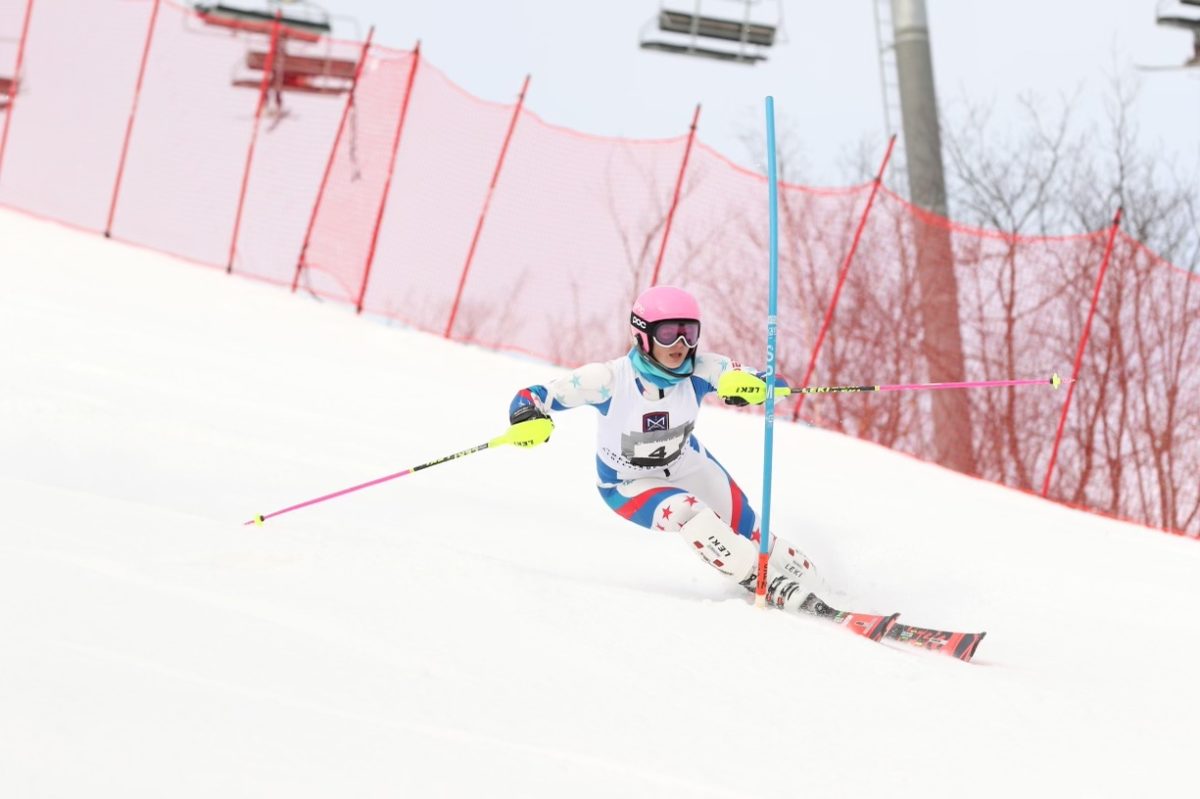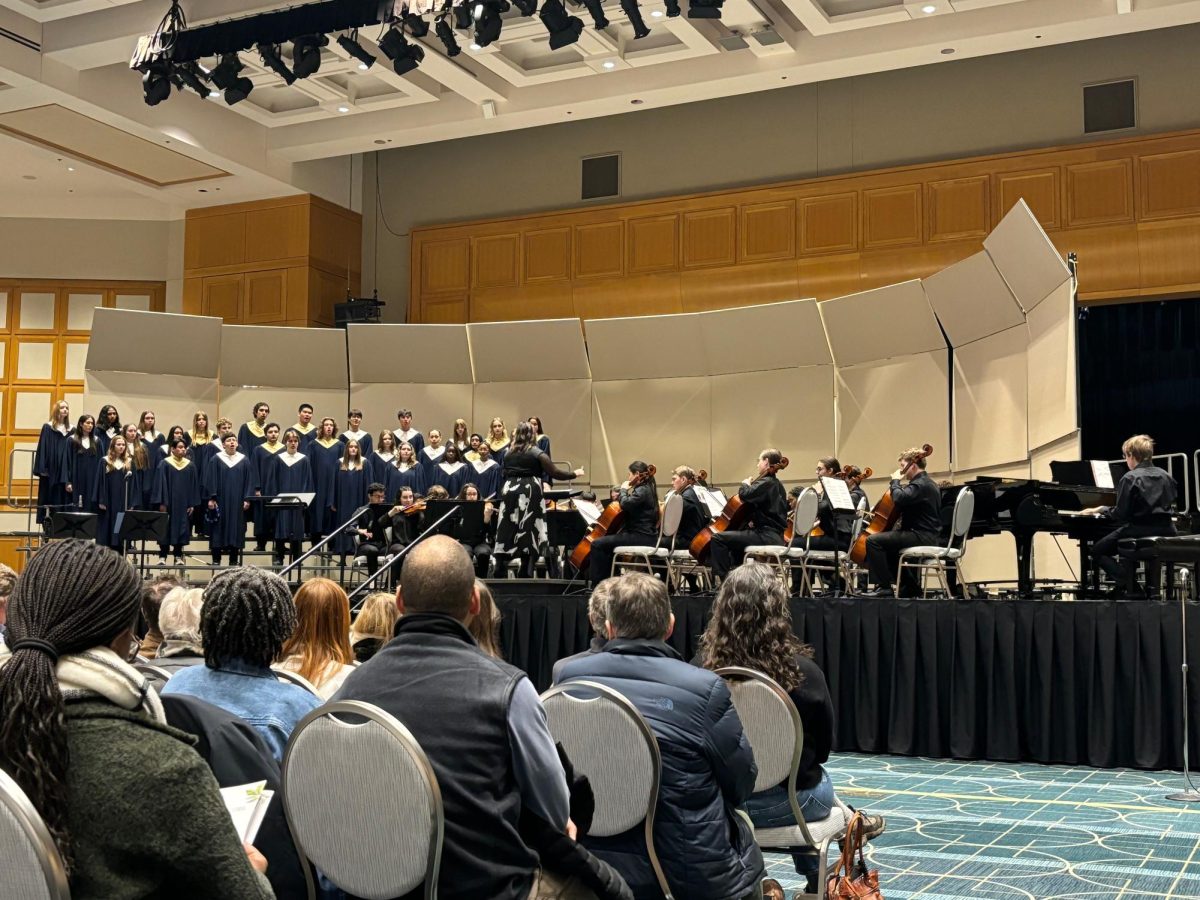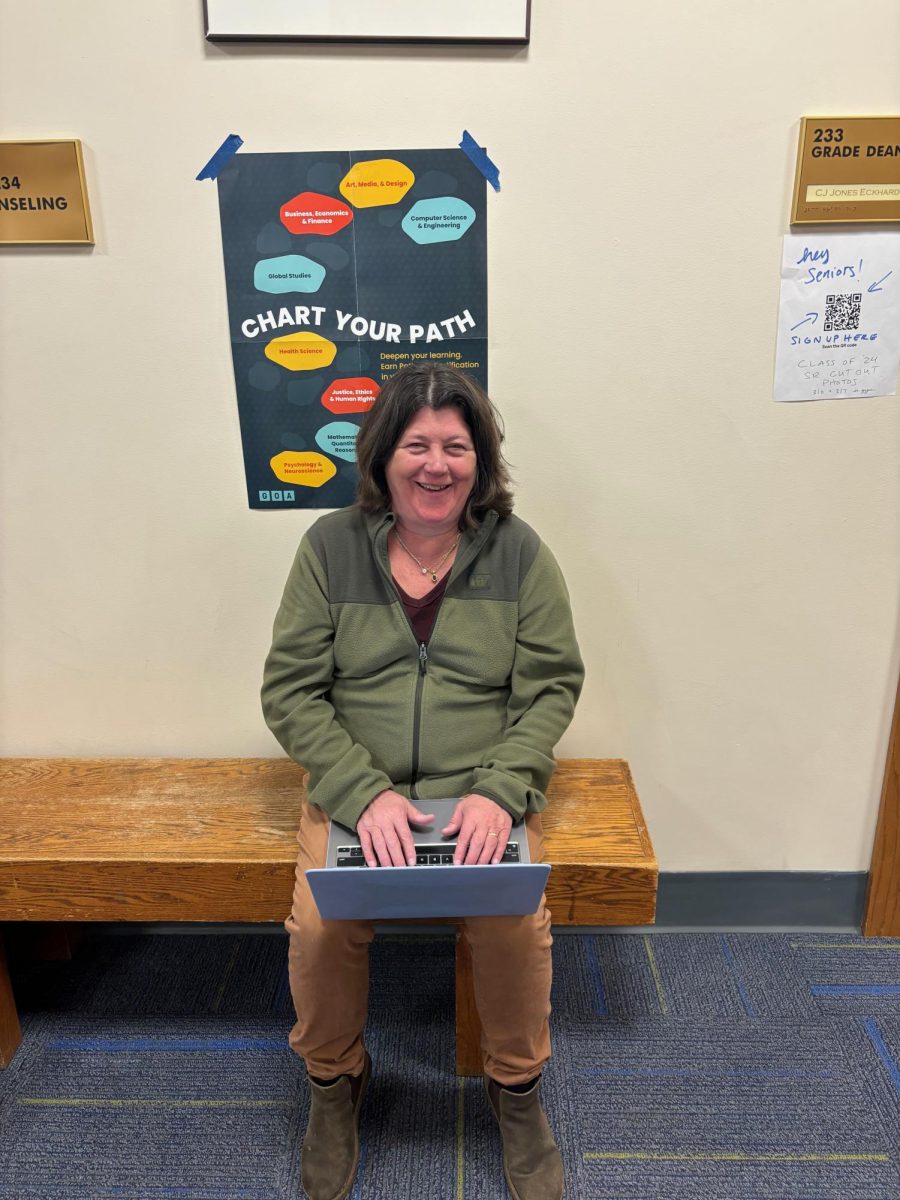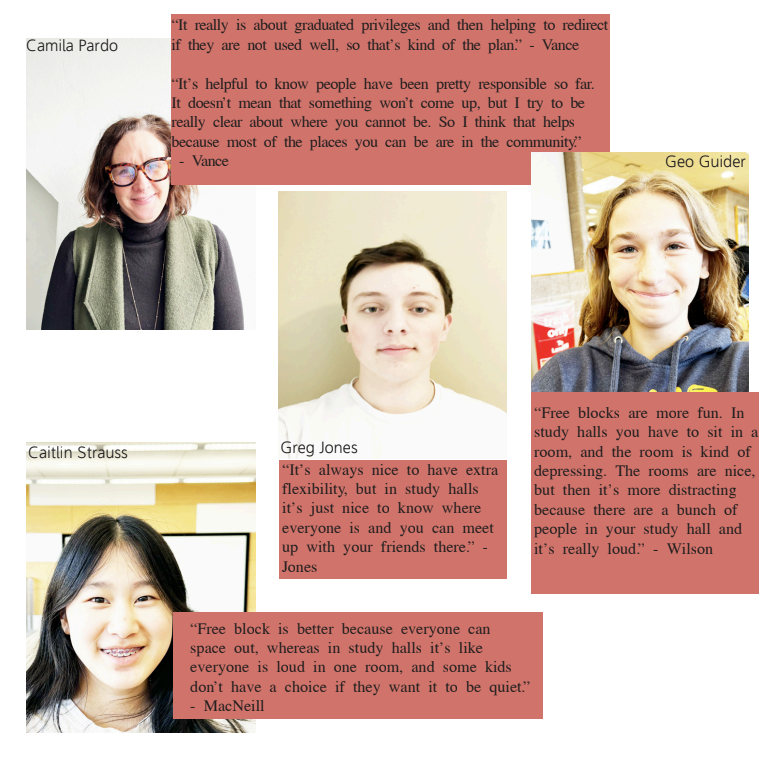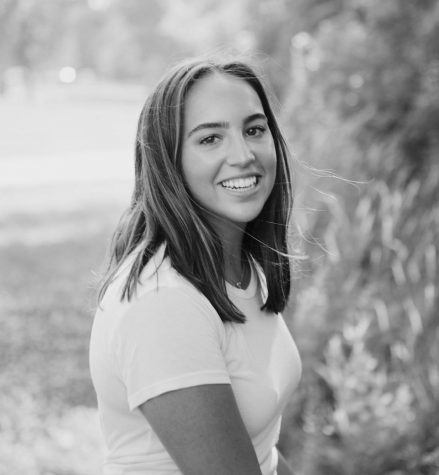This semester, a new research-oriented social studies class was offered for the first time, called “Seminar in Social Science: Design Thinking for School Culture.” The course works through a partnership with a research consortium at the University of Pennsylvania, called the School Participatory Action Research Collaborative or SPARC, giving the class its catchier moniker.
The blue and green groups of this class each chose their own research projects at the beginning of the semester and are working towards turning their data into a proposal to improve the Upper School. Anne Rubin, who teaches the class, says, “It’s really awesome to, one, kind of give kids the tools and space to actually look more closely into the experience of the school, but also begin to talk about… how we can change some aspects of the Blake experience.”
The blue group focuses on students’ political identity and how their news and social media consumption affect that. Solveig Bingham ’21, who is in the blue group, says, “We were told that we should choose a topic and create a question that’s something affecting everyone, especially at Blake, but everyone globally can understand. We wanted something that was inclusive, so we didn’t really want to go gender-based or race-based.”
Grace Ersfeld-O’Brien ’22 in the green group says, “We’re studying the adjustment to hybrid and now remote learning, so we’re just kind of tracking students’ experiences with that so we can propose changes.” Both groups are still in the process of gathering and analyzing data before they form conclusions and develop proposals.
The green group gathered data through two rounds of surveys. The first was sent to 78 students and included questions about their average daily screen time in the last ten days, three most-used apps, where they get their news, and if their political outlook aligns with conservative, moderate, or liberal ideas.
Next, a follow-up survey was sent to just 15 students asking how political they consider themselves and how politically active/vocal they are at school. Bingham says, “I think that a lot of students, and this is a global thing, if you were to be a conservative and list yourself as a five, people are going to say you’re a crazy conservative and you think the most extreme of ideas… but that could just mean you’re very involved as a conservative… This also made us think about whether Blake students feel comfortable sharing their political opinions at Blake.”
Rubin adds, “I think that what’s emerging in that data so far is that students who have one particular type of political identity do feel comfortable having political discussions in classrooms, and students who have one type of political identity don’t… The goal would be, we want everyone to have a full Blake experience in our classrooms and want everyone to have the tools and ability to speak with each other on this topic.”
Meanwhile, Ersfeld-O’Brien says the blue group is “tracking motivation over time, students’ social lives, their overall feeling… We’ve asked them to kind of assess that based on how they’re doing emotionally and socially as well as literally with their grades. People are doing pretty well on average, I’d say, with their schoolwork, they’re keeping up, but what’s suffering mostly, as you might expect, is their social lives, their mental health, things like that.”
Peter Johnson ’22, another member of the blue group, says, “We’re trying to collect data about the school experience with hybrid and online learning… our first goal was to interview 100 kids, about 25 from each grade” but they shifted to three more in-depth interviews after school moved online. Ersfeld-O’Brien shares their findings since then, “With the recent pivot to remote learning, peoples’ motivation has decreased a lot.”
Originally, students planned to present their research and proposals at the University of Pennsylvania in the spring, but that may happen online instead. After attending the conference two years ago with Upper School Director Joe Ruggiero, Rubin says, “It was awesome just to kind of see kids at the center of the experience, like presenting their research and they’re doing all sorts of really interesting things. They’re doing research into anxiety and depression and what that means at school, they’re doing research into racial dynamics, they’re doing research into culture of homework… and collaborating to create some change.”
Many students were drawn to the class because it’s different from any other social studies class offered; everything is student-driven, very research-focused, and grounded in current problems. Bingham says, “Personally, I’m not a fan of learning about history… I don’t care about some white, crusty old man that did something that he probably didn’t even do. Somebody else did it for him, or an Indigenous person did it first, but he was just the first one to write it down… In SPARC, we’re looking at stuff that’s happening right now, and I think that’s pretty valuable.”
Johnson echoes this sentiment, “It doesn’t even feel like a class. It feels like it’s more preparing you for real-world situations where you have to go out and find people and hear from them.”
The class will most likely be offered again next year and presents an excellent opportunity for students looking for more independent, hands-on experiences. Rubin says, “I’m excited for kids to just be able to get information about the people around you because I think that, at Blake in particular, we have the tendency to really just live in our own bubbles and think that our experience at Blake is the experience at Blake and that’s not true.”
This ideal is brought to life in the research projects as well as in the class itself. Bingham says, “We’re having a conversation every day… where people get to talk about what they care about… and everybody is listening to each other with the intent of hearing each other out and learning something new.”




